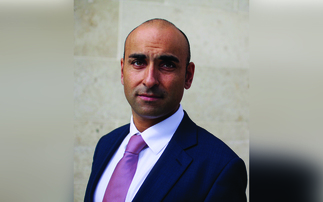With society facing many urgent and complex challenges, deciding who is best-placed to deliver solutions has become an emotive and often political subject. We assess whether there is a better way to utilise the skills and resources of the public, private and third sectors for the greater good.
Blasting a shuttle into space is a costly business. With the National Aeronautics and Space Agency (NASA) at the controls, a single shuttle could burn US$1.5 billion taking matter into low Earth orbit.1
But NASA's approach seems anathema today. Who would plan such a costly, complex operation and jettison parts after a single use? Today, US commercial operator SpaceX partners NASA in transporting cargo to the International Space Station over 400 kilometres above the earth, but it has a different vision; based around simplifying and re-using as quickly as possible.
By using new approaches - like a floating platform to land a rocket booster as it returns to land, or a ship armed with nets to ‘catch' jettisoned parts - the economics of space travel can be transformed. Targeting rapid parts turnaround means cost equations change entirely.
"Reusability is only relevant if it is rapid and complete," explains SpaceX CEO Elon Musk. "You do not send your aircraft into Boeing in between flights."2
Of course, the reality is complicated, and only small parts of the ‘re-use and re-cycle' vision have been achieved. An insulated rocket nose cone could be larger than a bus, weighing-in at around 800 kilos and, even when slowed by a parachute, getting an ocean landing area cleared and a recovery boat in the right spot to ‘catch' it will be challenging.
Costing progress
Source: The Impact of Lower Launch Cost on Space Life Support. NASA Ames Research Center
It is a nice story, but it is reasonable to question why this is relevant in understanding who is best-placed to solve complex challenges in the long-standing public/private debate.
1. Who needs innovation ‘moonshots'?
It could be argued no-one ‘needed' President Kennedy's ‘moonshot' in the 1960s, but the US justified an enormous national investment as the Soviet Union was sabre-rattling. The space programme served a clear political objective - a direct challenge to USSR - and led to innovation in multiple fields simultaneously; defence, robotics, satellite technology, nutritional science, water purification and textile design.4
Since then, private companies have actively capitalised on those ideas. New communications technologies, drought warning systems, specialist fabrics for extreme climates, dehydrated foods, comfort foam beds… the list goes on. The value created from the original research drive has been immense, and whole new areas of commercial activity have emerged. A world monitored from space has few places to hide, but may have the infrastructure to deliver cheap, universal WiFi.5
This raises several questions. Which of today's problems need cutting-edge science, and who should deliver the solutions? Specifically, what should the role of the state be when resources are short but society's wants and to-do lists are so long? And, if delivering solutions means pulling in capital and market discipline from the private sector, how can incentives be structured in ways that will genuinely benefit the wider community?
Setting the compass
An approach gaining traction involves re-imagining the role of the state; not as a sluggish Leviathan, but an important player directing growth. Professor Mariana Mazzucato from the Institute of Innovation and Public Purpose at University College London, believes innovation has two elements - pace and direction - and governments can influence both. In her view, an unfettered free market has benefits but is unlikely to deliver complex technical or social goals without at least some direction from the state. She argues it is naïve to think achievements that are often ‘claimed' by the private sector - like the development of the smart phone - came about without any government involvement.
"If you take apart the iPhone, every little bit of it is actually funded by the state," she says. "The state has not just funded the schools that have educated the workers that have done the research behind the iPhone. The state directly funded the internet, GPS, the touchscreen display and the communication technology behind the phone."
This conviction in the state's ability to make and shape underpins the mission-led innovation policy Mazzucato is actively promoting around the world. By setting targets and providing explicit incentives - like providing capital to the institutions that underpin research, offering tax breaks, income-contingent loans and credit guarantees - state involvement can be transformative.
References
- 1. The Impact of Lower Launch Cost on Space Life Support. NASA Ames Research Center
- 2. Interview with TED curator Chris Anderson. https://www.youtube.com/watch?v=zIwLWfaAg-8. Published 3 May 2017
- 3. The Impact of Lower Launch Cost on Space Life Support. NASA Ames Research Center
- 4. Space Race legacy: 10 technologies still in use today. Telegraph. 9 February 2019
- 5. SpaceX Just Launched The First 60 of Nearly 12,000 High-Speed Internet Satellites. Science Alert. 24 May 2019
Important information
Except where stated as otherwise, the source of all information is Aviva Investors Global Services Limited (AIGSL) as at 4 September 2019. Unless stated otherwise, any views and opinions are those of Aviva Investors. They should not be viewed as indicating any guarantee of return from an investment managed by Aviva Investors nor as advice of any nature. Information contained herein has been obtained from sources believed to be reliable, but has not been independently verified by Aviva Investors and is not guaranteed to be accurate. Past performance is not a guide to the future. The value of an investment and any income from it may go down as well as up and the investor may not get back the original amount invested. Nothing in this material, including any references to specific securities, assets classes and financial markets is intended to or should be construed as advice or recommendations of any nature. This material is not a recommendation to sell or purchase any investment.
In the UK & Europe, this material has been prepared and issued by AIGSL, registered in England No.1151805. Registered Office: St. Helen's, 1 Undershaft, London, EC3P 3DQ. Authorised and regulated in the UK by the Financial Conduct Authority. In France, Aviva Investors France is a portfolio management company approved by the French Authority "Autorité des Marchés Financiers", under n° GP 97-114, a limited liability company with Board of Directors and Supervisory Board, having a share capital of 17 793 700 euros, whose registered office is located at 14 rue Roquépine, 75008 Paris and registered in the Paris Company Register under n° 335 133 229. In Switzerland, this document is issued by Aviva Investors Schweiz GmbH, authorised by FINMA as a distributor of collective investment schemes.
In Singapore, this material is being circulated by way of an arrangement with Aviva Investors Asia Pte. Limited (AIAPL) for distribution to institutional investors only. Please note that AIAPL does not provide any independent research or analysis in the substance or preparation of this material. Recipients of this material are to contact AIAPL in respect of any matters arising from, or in connection with, this material. AIAPL, a company incorporated under the laws of Singapore with registration number 200813519W, holds a valid Capital Markets Services Licence to carry out fund management activities issued under the Securities and Futures Act (Singapore Statute Cap. 289) and Asian Exempt Financial Adviser for the purposes of the Financial Advisers Act (Singapore Statute Cap.110). Registered Office: 1 Raffles Quay, #27-13 South Tower, Singapore 048583. In Australia, this material is being circulated by way of an arrangement with Aviva Investors Pacific Pty Ltd (AIPPL) for distribution to wholesale investors only. Please note that AIPPL does not provide any independent research or analysis in the substance or preparation of this material. Recipients of this material are to contact AIPPL in respect of any matters arising from, or in connection with, this material. AIPPL, a company incorporated under the laws of Australia with Australian Business No. 87 153 200 278 and Australian Company No. 153 200 278, holds an Australian Financial Services License (AFSL 411458) issued by the Australian Securities and Investments Commission. Business Address: Level 30, Collins Place, 35 Collins Street, Melbourne, Vic 3000, Australia.
The name "Aviva Investors" as used in this material refers to the global organization of affiliated asset management businesses operating under the Aviva Investors name. Each Aviva investors' affiliate is a subsidiary of Aviva plc, a publicly- traded multi-national financial services company headquartered in the United Kingdom. Aviva Investors Canada, Inc. ("AIC") is located in Toronto and is registered with the Ontario Securities Commission ("OSC") as a Portfolio Manager, an Exempt Market Dealer, and a Commodity Trading Manager. Aviva Investors Americas LLC is a federally registered investment advisor with the U.S. Securities and Exchange Commission. Aviva Investors Americas is also a commodity trading advisor ("CTA") and commodity pool operator ("CPO") registered with the Commodity Futures Trading Commission ("CFTC"), and is a member of the National Futures Association ("NFA"). AIA's Form ADV Part 2A, which provides background information about the firm and its business practices, is available upon written request to: Compliance Department, 225 West Wacker Drive, Suite 2250, Chicago, IL 60606.
RA19/1064/29082020











